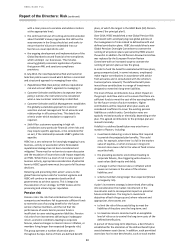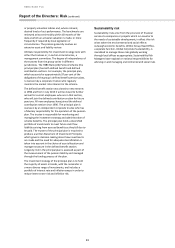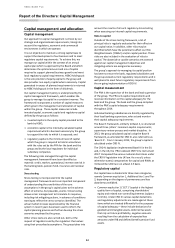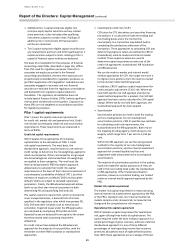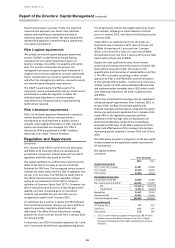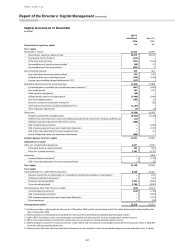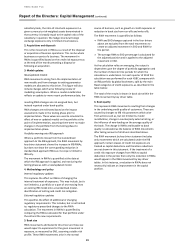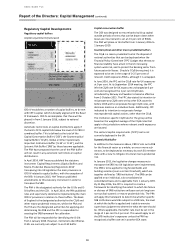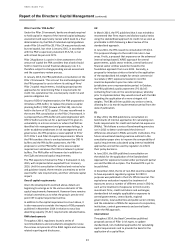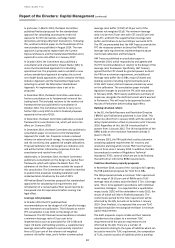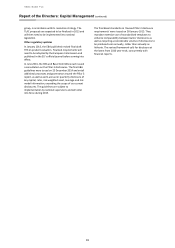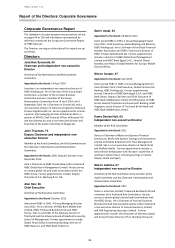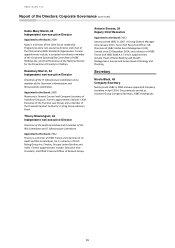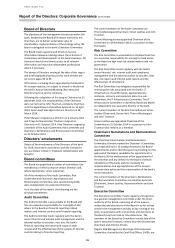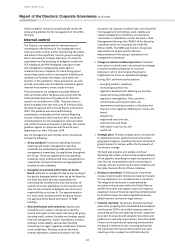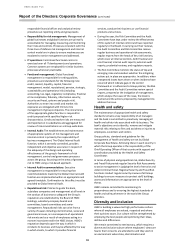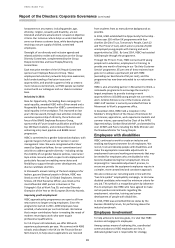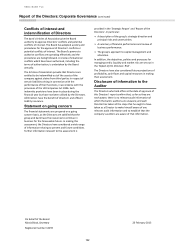HSBC 2014 Annual Report Download - page 94
Download and view the complete annual report
Please find page 94 of the 2014 HSBC annual report below. You can navigate through the pages in the report by either clicking on the pages listed below, or by using the keyword search tool below to find specific information within the annual report.
HSBC BANK PLC
Report of the Directors: Capital Management (continued)
92
In particular, in March 2014, the Basel Committee
published finalised proposals for the standardised
approach for calculating counterparty credit risk
exposures for OTC derivatives, exchange traded
derivatives and long settlement transactions. Following
this, another technical paper on the foundations of the
new standard was published in August 2014. The new
approach is proposed to replace both the Current
Exposure Measure and the Standardised Method and is
expected to come into effect on 1 January 2017.
In October 2014, the Committee also published a
consultation and a Quantitative Impact Study (‘QIS’) to
revise the standardised approach for calculating
operational risk. The proposals seek to establish a new
unitary standardised approach to replace the current
non-model-based approaches, which comprise the Basic
Indicator Approach and the Standardised Approach,
including its variant the Alternative Standardised
Approach. An implementation date is yet to be
proposed.
In December 2014, the Basel Committee undertook a
further consultation on its fundamental review of the
trading book. This included revisions to the market risk
framework that was published for consultation in
October 2013. The Committee intends to carry out a
further QIS in early 2015 to inform finalised proposals
expected at the end of 2015.
In December, the Basel Committee published a revised
framework for securitisation risk, which will come into
effect on 1 January 2018.
In December 2014, the Basel Committee also published a
consultation paper on revisions to the Standardised
Approach for credit risk. Proposals include a reduced
reliance on external credit ratings; increased granularity
and risk sensitivity; and updated risk weight calibrations.
Proposed calibration for risk weights are indicative only
and will be further informed by responses from this
consultation and results from a QIS.
Additionally, in December 2014, the Basel Committee
published a consultation on the design of a capital floor
framework, which will replace the Basel I floor. The
calibration of the floor is however outside the scope of
this consultation. The Committee has stated its intention
to publish final proposals including calibration and
implementation timelines by the end of 2015.
All finalised Basel Committee proposals for standardised
approaches for calculating risk requirements and
introduction of a revised capital floor would need to be
transposed into EU requirements before coming into
legal effect.
Leverage ratio proposals
In October 2014 the FPC published final
recommendations on the design of a UK specific leverage
ratio framework and calibration. This followed an earlier
FPC consultation in July 2014 on the design of the
framework. The FPC finalised recommendations included
a minimum leverage ratio of 3 per cent to be
implemented as soon as practicable for UK G-SIBs and
major UK banks and building societies, a supplementary
leverage ratio buffer applied to systemically important
firms of 35 per cent of the relevant risk-weighted
systemic risk buffer rates, and a further countercyclical
leverage ratio buffer (‘CCLB’) of 35 per cent of the
relevant risk-weighted CCyB. The minimum leverage
ratio is to be met 75 per cent with CET1 and 25 per cent
with AT1, and both the supplementary leverage ratio
buffer and CCLB are to be met 100 per cent with CET1.
The FPC recommended that the HM Treasury provide the
FPC the necessary powers to direct the PRA to set
leverage ratio requirements implementing the above
mentioned calibration and framework.
HM Treasury published a consultation paper in
November 2014, which responded to and agreed with
the FPC recommendations in relation to the design of the
leverage ratio framework. Specifically, HM Treasury
agreed that the FPC should be granted powers to direct
the PRA on a minimum requirement, and additional
leverage ratio buffer (for G-SIBs, major UK banks and
building societies including ring fenced banks) and a
CCLB. HM Treasury did not however provide any views
on the calibration. The consultation paper included
legislative changes to provide the FPC with new powers.
In February 2015, HM Treasury published a summary of
responses, alongside the draft instrument which was laid
in Parliament. This will need to be approved by both
Houses of Parliament before taking legal effect.
Banking structural reform
In the EU, the Bank Recovery and Resolution Directive
(‘BRRD’) was finalised and published in June 2014. This
came into effect from 1 January 2015, with the option to
delay implementation of bail-in provisions until 1 January
2016. Regardless of this, the UK introduced bail-in
powers from 1 January 2015. The UK transposition of the
BRRD builds on the resolution framework already in
place in the UK.
In January 2015, the PRA published a policy statement
containing updated requirements for recovery and
resolution planning which revises PRA rules that have
been in force since 1 January 2014. In addition, the EBA
has produced a number of Regulatory Technical
Standards (‘RTS’), some of which are yet to be finalised,
that will further inform the BRRD requirements.
Total loss absorbency capacity proposals
In November 2014, as part of the ‘too big to fail’ agenda,
the FSB published proposals for TLAC for G-SIBs.
The FSB proposals include a minimum TLAC requirement
in the range of 16-20 per cent of RWAs and a TLAC
leverage ratio of at least twice the Basel 3 Tier 1 leverage
ratio. This is to be applied in accordance with individual
resolution strategies. It is expected that a quantitative
impact study (‘QIS’) will be undertaken in early 2015, the
results of which will inform finalised proposals. The
conformance period for the TLAC requirement will be
informed by the QIS, but will not be before 1 January
2019. Once finalised, it is expected that any new TLAC
standard should be met alongside the Basel 3 minimum
capital requirements.
The draft proposals require G-SIBs and their material
subsidiaries to be subject to a minimum TLAC
requirement with the precise requirement to be
informed by the QIS. There are a number of
requirements relating to the types of liabilities which can
be used to meet the TLAC requirement, the composition
of TLAC, and the location of liabilities within a banking


